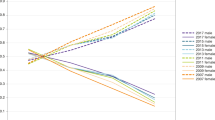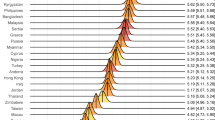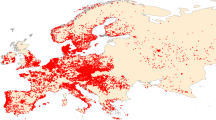Abstract
Astronomers have a long tradition of outreach to satisfy public enthusiasm about stars and the Universe. Anecdotal evidence shows that astronomers love to popularize1, and their efforts reach millions around the world2,3. Yet no systematic comparisons of these activities may be performed without robust evidence. The general literature on scientists’ outreach finds barriers that discourage outreach, such as lack of fun, time, skills or recognition, or the perception that it lies outside of the professional role4 and is a risk to reputation—the ‘Carl Sagan effect’. It also finds that outreach is generally more frequent among the most senior and academically productive male scientists5,6,7. Here, we present a study of n = 2,587 members of the International Astronomical Union with a 30% response rate. This is the largest systematic study of astronomers’ outreach activities beyond local case studies8,9,10, which reveals how these factors compare within this community and in different research systems and environments. We show regional variations of outreach activity, with higher activity among astronomers in South America and Africa, and find that personal factors are important, yet contextual factors matter too. Among astronomers, gender, rewards and fear of peer criticism do not matter. Future research should focus on explanatory factors inherent to the ecology of scientific work, to better understand what drives scientists within their specific cultural and research environments.
This is a preview of subscription content, access via your institution
Access options
Access Nature and 54 other Nature Portfolio journals
Get Nature+, our best-value online-access subscription
$29.99 / 30 days
cancel any time
Subscribe to this journal
Receive 12 digital issues and online access to articles
$119.00 per year
only $9.92 per issue
Buy this article
- Purchase on Springer Link
- Instant access to full article PDF
Prices may be subject to local taxes which are calculated during checkout




Similar content being viewed by others
Data availability
The data that support the plots within this paper and other findings of this study are available from the corresponding author upon reasonable request.
References
Selin, H. Astronomy Across Cultures: The History of Non-Western Astronomy (Springer, Basel, 2000).
Raddick, M. J. et al. Galaxy Zoo: motivations of citizen scientists. Preprint at https://arxiv.org/abs/1303.6886 (2013).
International Year of Astronomy (IYA) Final Report (IAU, 2009).
Johnson, D. R., Ecklund, E. H. & Lincoln, A. E. Narratives of science outreach in elite contexts of academic science. Sci. Commun. 36, 81–105 (2014).
Bentley, P. & Kyvik, S. Academic staff and public communication: a survey of popular science publishing across 13 countries. Public Underst. Sci. 20, 48–63 (2011).
Jensen, P. A statistical picture of popularization activities and their evolutions in France. Public Underst. Sci. 20, 26–36 (2011).
Dunwoody, S. & Scott, B. T. Scientists as mass media sources. J. Mass Commun. Q. 59, 52–59 (1982).
Entradas, M. What is the public’s role in ‘space’ policymaking? Images of the public by practitioners of ‘space’ communication in the United Kingdom. Public Underst. Sci. 25, 603–611 (2016).
Dang, L. & Russo, P. How astronomers view education and public outreach: an exploratory study. Commun. Astron. Public J. 18, 16–21 (2015).
Entradas, M. & Miller, S. EuroPlaNet outreach sessions through a lens: engaging planetary scientists in the communication of science. Commun. Astron. Public J. 6, 8–12 (2009).
OECD Science, Technology and Industry Outlook (OECD, 2014); https://doi.org/10.1787/sti_outlook-2014-en
Hearnshaw, J. B. & Martinez, P. Special Session 5 Astronomy for the developing world. Proc. Int. Astron. Union 2, 639–671 (2006).
Ribeiro, V. A., Russo, P. & Cárdenas-Avendaño, A. A survey of astronomical research: an astronomy for development baseline. Astron. J. 146, 1–8 (2013).
Gregory, J. & Miller, S. Science in Public: Communication, Culture and Credibility (Plenum Press, Cambridge, 1998).
Peters, H. P. in The Sciences’ Media Connection—Public Communication and its Repercussions (eds Rödder, S. & Franzen, M. W. P.) 217–239 (2012).
Entradas, M. & Bauer, M. M. Mobilisation for public engagement: benchmarking the practices of research institutes. Public Underst. Sci. 26, 771–788 (2017).
McBride, V., Venugopal, R., Hoosain, M., Chingozha, T. & Govender, K. The potential of astronomy for socioeconomic development in Africa. Nat. Astron. 2, 511–514 (2018).
Marcinkowski, F., Kohring, M., Fürst, S. & Friedrichsmeier, A. Organizational influence on scientists’ efforts to go public: an empirical investigation. Sci. Commun. 36, 56–80 (2014).
Dudo, A., Kahlor, L. A., Abighannam, N., Lazard, A. & Liang, M. C. An analysis of nanoscientists as public communicators. Nat. Nanotechnol. 9, 841–844 (2014).
Shermer, M. B. The view of science. Soc. Stud. Sci. 32, 489–524 (2002).
Crettaz von Roten, F. Gender differences in scientists’ public outreach and engagement activities. Sci. Commun. 33, 52–75 (2011).
Pović, M. et al. Development in astronomy and space science in Africa. Nat. Astron. 2, 507–510 (2018).
Wild, S. South Africa pushes science to improve daily life. Nature https://www.nature.com/articles/d41586-018-06122-9 (2018).
Bauer, M. W., Howard, S., Romo, Y. J., Massarani, L. & Amorim, L. Global Science Journalism Report: Working Conditions & Practices, Professional Ethos and Future Expectations (2012).
Deci, E. & Ryan, R. Intrinsic Motivation and Self-Determination in Human Behavior (Springer, New York, 1985).
Poliakoff, E. & Webb, T. L. What factors predict scientists’ intentions to participate in public engagement of science activities? Sci. Commun. 29, 242–263 (2007).
Survey of Factors Affecting Science Communication by Scientists and Engineers. Excellence in Science (Royal Society, 2006).
Ryan, R. M. & Deci, E. L. Intrinsic and extrinsic motivation: classic definitions and new directions. Contemp. Educ. Psychol. 25, 54–67 (2000).
Peters, H. P. et al. Science communication: interactions with the mass media. Science 321, 204–205 (2008).
Acknowledgements
The authors thank the ESO, the Leiden Observatory and P. Russo, and the IAU for supporting the study. We also thank A. Suerdem and P. Yam (LSE) for fruitful discussions on the data analyses.
Author information
Authors and Affiliations
Contributions
M.E. and M.W.B. designed the instrument measurement. M.E. collected the data, performed the analysis, and wrote the manuscript and Supplementary Information. M.W.B. contributed to analysing and interpreting the results.
Corresponding author
Ethics declarations
Competing interests
The authors declare no competing interests.
Additional information
Publisher’s note: Springer Nature remains neutral with regard to jurisdictional claims in published maps and institutional affiliations.
Supplementary information
Supplementary Information
Supplementary Tables 1–7, Supplementary Figures 1–9
Rights and permissions
About this article
Cite this article
Entradas, M., Bauer, M.W. Bustling public communication by astronomers around the world driven by personal and contextual factors. Nat Astron 3, 183–187 (2019). https://doi.org/10.1038/s41550-018-0633-7
Received:
Accepted:
Published:
Issue Date:
DOI: https://doi.org/10.1038/s41550-018-0633-7
This article is cited by
-
How to restore trust in science through education
Nature Physics (2023)
-
How spin-off companies can play a role in science communication
Nature Reviews Physics (2022)
-
Five steps for astronomers to communicate climate change effectively
Nature Astronomy (2021)
-
Beyond the Sagan effect
Nature Astronomy (2019)
-
A bridge between research, education and communication
Nature Astronomy (2019)



